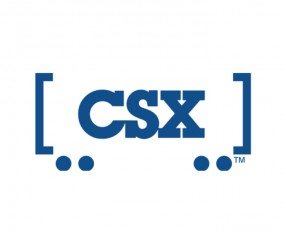
Shares of CSX have roared back since late June and received an additional boost after the company reported a decent second quarter trading update. However, the company warned of critical market conditions in most of the end markets it serves.
In the three months ended June 24, revenues dropped 11.7% to $2.7bn year-on-year due to falling volumes across most divisions, excluding automotive and minerals, which CSX expects to be the best performers in the third quarter.
The 11.7% drop in second-quarter revenue was almost 100 basis points lower than the fall in sales for the entire first half of 2016, on a comparable basis, which could be a good sign, although its operating ratio, which is a gauge of efficient costs allocation, surged 210 basis points to 68.9%.
Declining sales were not offset by falling costs, which were down 8.9% in the second quarter, with operating income falling to $840m from roughly $1bn one year earlier. The drop in quarterly operating income was virtually unchanged compared with first-half figures as CSX reacted by cutting labour and fringe costs, as well as other expenses.
While the group benefitted from significantly lower fuel prices, net income in the second quarter came in at $445m, but its bottom line in the first half was $198m lower than in the same period the year before, when net earnings came in at $995m.
The slump in earnings restricted earnings per share (EPS) in the second quarter, down 16% year-on-year – EPS were boosted, again, by significant stock buybacks in the period, while dividends per share were flat year-on-year but rose 5.9% in the first half on a comparable basis, given a lower share count.
Quarter-on-quarter trends for earnings are similar: in the previous quarter, net earnings stood at $356m, down 19% against one year earlier, when its share count was higher.
Despite falling earnings operating cash flow rose mildly in the first half to almost $1.6bn – lower capital expenditure determined a healthier free cash flow profile, but was spurred by lower receivables.
The net decrease in cash and cash equivalents was due to a significant cash outflow from financing due to aggressive buybacks. Once cash flows from operations, investment and financing are taken into account, its overall cash-burn rate was about $10m monthly in the first half.
CSX announced a $2bn share repurchase programme in April last year, which will end in April 2017 – by then, some investors’ confidence may have waned. “During the second quarters of 2016 and 2015, the company repurchased approximately $266m, or 10m shares, and $157m, or 4m shares, respectively,” it noted.
But during the first six months of 2016 and 2015, “the company repurchased $515m, or 20m shares, and $284m, or 8m shares, respectively.”
CSX has room to cut buybacks before trimming the dividend, whose sustainability has been questioned by income investors at a time when rail volumes will likely remain soft in the third quarter.
“Overall, outlook for the third quarter is down,” CSX said in a presentation to investors.
Source: Transport Intelligence, July 20, 2016
Author: Alessandro Pasetti